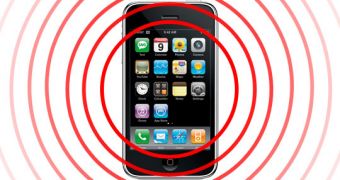Apple has filed a patent application with the United States Patent & Trademark Office to secure an invention which the Cupertino company believes will lead to quieter smartphone vibrations.
An issue plaguing portable telecommunications devices since the first pagers rolled out, the sound coming from the vibrating motors inside our cell phones is often as annoying as a loud ringtone.
Which beats the purpose of “silent mode” settings, as AppleInsider points out.
In this respect, Apple has filed an invention with the US Patent & Trademark office titled “Vibration in Portable Devices.”
One embodiment described in the filing includes “a method of reducing noise from vibration of a device on a hard surface.”
As all iPhone users have noticed, phones vibrating on a table often generate a rattling sound that results in anything but “silent mode.”
Apple’s method includes “activating a haptic device to indicate an alert and sensing an audible level during activation of the haptic device.”
“Additionally,” the literature states, “the method includes determining if the audible level exceeds a threshold and initiating mitigation routines to reduce the audible level to a level below the threshold if the threshold is exceeded.”
Your typical haptic gizmo found in cell phones is a rotating motor coupled with an eccentric weight. Another method employed by engineers to achieve the same results is a linear vibrator.
According to Apple, “the two types of vibrators present separate issues.” However, the latter seems to present more advantages.
“The linear vibrator may similarly exhibit some of the same symptoms as the rotating eccentric weight vibrators, but perhaps not to the same degree,” Apple states.
“In particular, when moved in or impacted in a direction that corresponds to the direction of linear displacement of the linear vibrator, displacement of the weight may occur and a user may sense the displacement,” reads the patent filing.
To read Apple’s patent application in full, visit the USPTO here.

 14 DAY TRIAL //
14 DAY TRIAL //